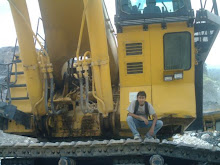
MELBOURNE, Australia – The Lockheed Martin F-35 Lightning II may be redesigned to improve its ability to absorb heat from its electronics and systems.
The aircraft is meeting the specification for thermal management, but the Joint Strike Fighter program’s deputy executive officer, Maj. Gen. David Heinz (select), says he is asking contractors to assess the costs of changes to give it a bigger margin over the requirement.
“We meet that requirement but it is a very tough requirement,” Heinz says, adding that, while he has asked for studies for an improved margin, “at the moment I don’t need it.”
The F-35 is designed to transfer heat from its powerful electronics and systems to its fuel, to keep the aircraft cool and make it less detectable by infrared cameras.
Under most conditions, that presents no challenge, but if the aircraft is at the end of a mission, it will have little fuel aboard to absorb the heat energy, says Tom Burbage, Lockheed Martin’s executive vice president for F-35 program integration. And the toughest part of the specification is to distribute the heat into the remaining fuel while operating in the tropics in hot and high conditions.
While Heinz says the aircraft can do that, his interest in finding ways of increasing the margin – for example, by circulating the fuel faster and reducing the amount of generated heat – implies that the aircraft is only just meeting its specification without much room for comfort.
High fuel temperature would not result in critical failure, Burbage says, speaking at the Australian International Airshow here. The limit on the temperature is set by the heat tolerance of the full-authority digital engine control unit submerged in a fuel tank, he says. Overly hot fuel will shorten the unit’s life, but not cause it to suddenly fail.
Apart from a design change, there is an operational way to work around excess fuel temperature: fly higher, to reach cooler air.
That method may not suit every mission, however, and it will obviously be unavailable at the end of a flight, when the small volume of remaining fuel presents the greatest challenge but the pilot must descend for landing. This is particularly an issue for the F-35B, the vertical-takeoff-and-landing version that must hover and land at high power at the end of a mission without exceeding fuel temperature limits.
Meanwhile, extensive testing by Lockheed Martin and the Royal Australian Air Force, an intended customer, has found that the F-35 is not as noisy as feared. That issue has threatened to disrupt basing plans and potentially presents health risks to ground personnel.
The F-35 is only about as noisy as an F-16 fitted with a Pratt & Whitney F100-PW-200 engine, Burbage says. It is quieter than the Lockheed Martin F-22 Raptor and the Boeing F/A0-18E/F Super Hornet. “It is noisier than a classic Hornet [F/A-18A-D] but not much noisier,” says Air Vice Marshal John Harvey, manager of Australia’s New Air Combat Capability program.
Moreover, the F-35 often will be able to minimize airfield noise by taking off without afterburner, partly due to its internal weapons and fuel stowage.
Photo: Lockheed Martin; Oleh:Bradley Perrett




0 komentar:
Posting Komentar